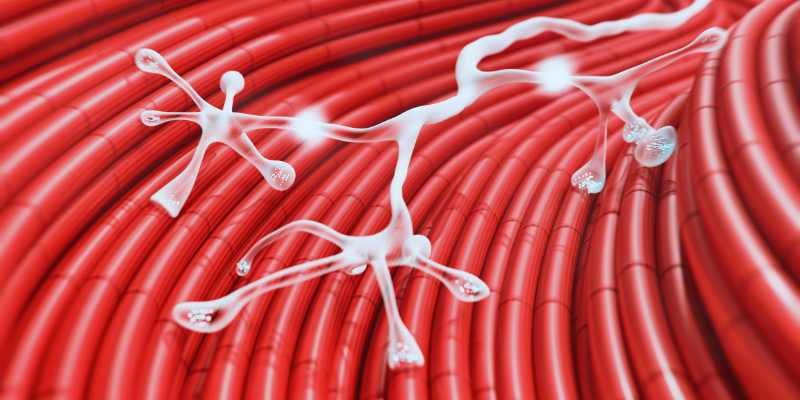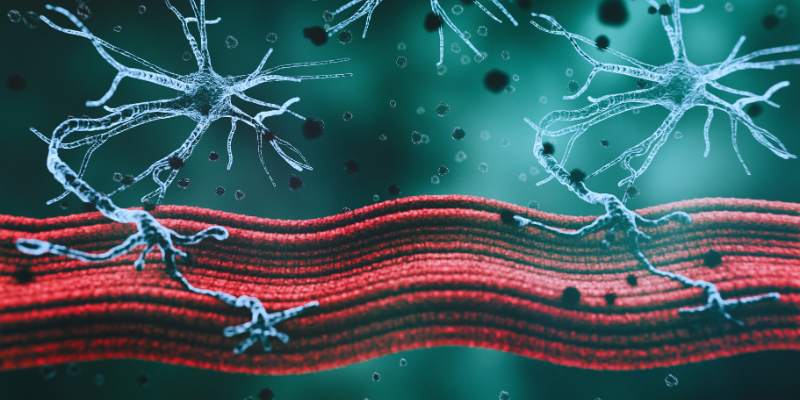Understanding the Common Symptoms of Neuromuscular Diseases: A Guide
It affects the nerves and muscles; neuromuscular illnesses cause weakness, discomfort, and mobility problems. These disorders affect daily tasks; therefore, moving, breathing, and swallowing become challenging. While some disorders worsen quickly, others advance gradually. Among common conditions include myasthenia gravis, ALS, and muscular dystrophy. Understanding early signs aids in diagnosis and therapy.
The most obvious symptoms are muscle weakness and tiredness. Numbness, tingling, and loss of coordination are further complaints. Some may have trouble speaking or breathing issues. The kind of neuromuscular disease one has affects the symptoms. Early identification enhances quality of life and available therapy choices. This guide clarifies the typical signs of neuromuscular illnesses. Knowing these symptoms enables one to seek medical assistance at the appropriate moment. Effective therapy and management can slow development and improve the general quality of life.

Symptoms Of Neuromuscular Diseases
Here are some common symptoms of neuromuscular diseases:
Muscle Weakness and Fatigue:
One main complaint of neuromuscular disorders is muscle weakness. Usually beginning in the limbs, it moves to other places. People could have trouble walking, climbing stairs, or lifting things. Some have hand weakness, which makes gripping objects difficult. Daily chores get increasingly challenging over time. Another often occurring problem is tiredness. Weak muscles tired rapidly even after light exercise. Resting does not always bring back strength. Patients could be tired all through the day. Their capacity to engage in basic tasks or work may thus be compromised. Under some circumstances, muscle weakness gets worse with constant movement. Early identification of weakness facilitates symptom control. Tests and visits help to find underlying diseases.
Muscle Cramps and Twitching:
Muscle cramps are abrupt, painful contractions. They could last several minutes or just seconds. Many times, without physical exercise, neuromuscular illnesses induce regular cramping. They could influence the legs, arms, or hands, among other muscle groups. These pains can be severe and disturb sleep. Another complaint is twitching, sometimes called fasciculations—unconscious contraction of small muscle fibers under the skin that results in obvious movement. One can find twitching in the limbs, legs, or the face. Some find it more when they relax. Although occasional twitching is natural, persistent problems call for investigation. Both cramping and twitching point to problems with muscles and nerves. If the disorder advances, it could get worse with time. Reducing symptoms may come from keeping hydrated and controlling stress.

Numbness and Tingling Sensations
Many neuromuscular conditions cause tingling or numbness. This results from disturbance of nerve signals. Patients could have pins and needles in their feet, hands, or other body parts. Mild to strong sensations can impact mobility. Usually beginning in the extremities, numbing travels. It can make walking, gripping, or creating temperature changes difficult to sense. Some people lose their feelings in the afflicted areas. That raises a burn or injury risk. Tingling feelings could pass through or linger always. Often worse at night or following exercise are they are. These symptoms disturb daily living and should not be disregarded. Doctors advise remedies and identify the source using nerve tests.
Difficulty Swallowing and Speaking:
Common with neuromuscular illnesses are swallowing issues, sometimes known as dysphagia. Weak muscles in the throat complicate eating and drinking. Patients could choke from drinks or meals. Some people cough after eating. Aspiration resulting from this raises the risk of lung infections. Speaking problems also come up. Pronunciation suffers from weak tongue and facial muscles. Speech starts to slurred or difficult to understand. Some people find their speech sound nasal. Communication is harder during this time. Therapists can assist in controlling these symptoms. Specific workouts help to improve facial and throat muscles. Changing diets and swallowing methods help to avoid choking. Early treatment enhances speaking and eating skills.
Breathing Difficulties and Respiratory Issues:
Neuromuscular disorders compromise the muscles required for breathing. Deep breathing could prove difficult for some. One develops dyspnea even at rest. Some get up at night gasping for breath. Weak muscles failing to maintain proper breathing lead to this. Commoner are respiratory illnesses. Weak muscles cause coughing to be difficult, which builds mucus. That raises the risk of lung infection or pneumonia. In severe circumstances, patients can require oxygen therapy or ventilators. Tracking lung performance aids in early issue identification. Breathing exercises help to improve respiratory muscles. Night non-invasive ventilation helps certain patients. Should breathing problems arise, they call for quick medical intervention.
Balance and Coordination Problems:
Diseases of neuromuscular nature affect coordination. Patients could feel wobbly on their stroll. Some people widen their gait to keep balance. As muscular control decreases, falls get more often. Coordination loss makes even basic chores challenging. People struggle with picking up little objects or buttoning clothing. Handshakes can complicate things. Over time, fine motor skills fade. Physical treatment sharpens coordination and balance. Walking help comes from canes or braces. Strength building helps symptoms to slow down their advancement. Early intervention preserves independence.
Joint Stiffness and Limited Mobility:
Commonly occurring with neuromuscular illnesses is joint stiffness. It results from muscular loss of flexibility. Patients would find it difficult to bend their legs or arms. After periods of idleness, stiffness gets worse. Restricted movement influences daily life. People could need help with mobility or dressing as conditions advance, and some need wheelchairs. Muscle imbalances also might cause joint discomfort. Exercises, including stretches, increase flexibility. Physical treatment helps to avoid aggravation of stiffness. Patients stay mobility with assistive devices. Early treatment increases comfort and lessens problems.
Changes in Reflexes and Sensitivity:
Normal reflexes point to nerve issues. While some patients lose their reflexes, others have too strong ones. During a physical examination, a doctor looks over reflexes. Absence or weak reflexes point to nerve and muscular malfunction. Additionally, there are differences in sensitivity. Some people get great agony from little touches. Some people become unable to sense temperature or pressure. These problems raise the chance of injury. Managing reflex and sensitivity issues calls for medical direction. Tests of nerve function point out anomalies. Treatments mostly target symptom alleviation and complication avoidance.
Conclusion:
Several symptoms of neuromuscular illnesses include weakness, numbness, and dyspnea. Early diagnosis helps properly control these disorders. Knowing the warning signals enhances the results of treatment. Patients gain from medical care, lifestyle adjustments, and therapy. For those who fall under risk, doctors advise frequent visits. Following recommended therapies and keeping active help to increase quality of life. If symptoms develop, consulting a doctor is vital. Understanding and controlling these complicated disorders depends on awareness.












